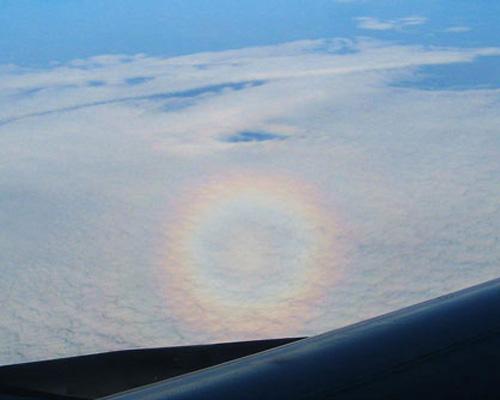 |
| Phyllobates terribilis |
Phyllobates terribilis, the Golden Poison Frog or the Golden Dart Frog, is a poison dart frog endemic to the Pacific coast of Colombia. The optimal habitat of P. terribilis is the rainforest with high rain rates (5 m or more), altitude between 100–200 m, temperature of
at least 26 °C, and relative humidity of 80–90%. In the wild, P. terribilis is a social animal, living in groups of up to six individuals; however, captive terribilis can live in much larger groups than that. Terribilis are often considered innocuous due to their small size and bright colours; however wild specimens are lethally toxic. This poison dart frog is confirmed to have killed humans who touched the wild frog directly.
PoisonThe Golden Poison Frog's skin is drenched in alkaloid poison, one of a number of poisons common to dart frogs (batrachotoxins) which prevents nerves from transmitting impulses, leaving the muscles in an inactive state of contraction. This can lead to heart failure or fibrillation. Alkaloid batrachotoxins can be stored by frogs for years after the frog is deprived of a food-based source, and such toxins do not readily deteriorate, even when transferred to another surface. Chickens and dogs have died from contact with a paper towel on which a frog had walked.
Like most poison dart frogs, the poison of P. terribilis is used only as a self-defense mechanism and not for killing prey. The golden poison frog is not venomous, but poisonous; venomous animals use their toxins to kill their prey. The most venomous animal is the box jellyfish, which is only slightly less toxic than P. terribilis.
The average dose carried will vary between locations, and consequent local diet, but the average wild P. terribilis is generally estimated to contain about one milligram of poison, enough to kill about 10,000 mice. This estimate will vary in turn, but most agree that this dose is enough to kill between 10 and 20 humans, which correlates to up to two African bull elephants. This is roughly 15,000 humans per gram.
This extraordinarily lethal poison is very rare. Batrachotoxin is only found[4] in three poisonous frogs from Colombia (genus Phyllobates) and three poisonous birds from Papua New Guinea: Pitohui dichrous, Pitohui kirhocephalus and Ifrita kowaldi. Other related toxins are Histrionicotoxin and Pumiliotoxin, which are found in frog species from the genus Dendrobates.
The golden poison frog, like most other poisonous frogs, stores its poison in skin glands. Due to their poison, the frogs taste vile to predators; P. terribilis poison kills whatever eats it, except for a snake, Liophis epinephelus. This snake is resistant to the frog's poison, but is not completely immune.
The poisonous frogs are perhaps the only creatures to be immune to this poison. Batrachotoxin attacks the sodium channels of the cells, but the frog has special sodium channels that the poison cannot harm.
Since easily purchasable foods such as fruit flies and extra-small crickets are not rich in the alkaloids required to produce batrachotoxins, captive frogs do not produce toxins and they eventually lose their toxicity in captivity. In fact, many hobbyists and herpetologists have reported that most dart frogs will not consume ants at all in captivity, though ants constitute the larger portion of their diet in the wild. This is likely due to the unavailability of the natural prey species of ants to captive frog keepers. Though all poison frogs lose their toxicity when deprived of certain foods, and captive-bred Golden Poison Frogs are born harmless, a wild-caught poison frog can retain alkaloids for years. It is not clear which prey species supplies the potent alkaloid that gives golden poison frogs their exceptionally high levels of toxicity, or whether the frogs modify another available toxin to produce a more efficient variant, as do some of the frog's cousins from the genus Dendrobates.
Thus, the high toxicity of P. terribilis appears to be due to the consumption of small insects or other arthropods, and one of these may truly be the most poisonous creature on Earth. Scientists have suggested that the crucial insect may be a small beetle from the family Melyridae. At least one species of these beetles produces the same toxin found in P. terribilis. The beetle family Melyridae is cosmopolitan. Its relatives in Colombian rainforests could be the source of the batrachotoxins found in the highly toxic Phyllobates frogs of that region.
Physical descriptionP. terribilis is the largest species of poison dart frog, and can reach a size of 55 mm in adulthood, with females typically being larger than males. Like all poison dart frogs, the adults are brightly colored, however they lack the dark spots present in many other dendrobatids. The frog's color pattern is aposematic (which is a warning pigmentation to warn predators of its toxicity). The frog has tiny adhesive disks in its toes which aid climbing of plants. It also has a bone plate in the lower jaw, which gives the frog the appearance of having teeth, a distinctive feature not observed in the other species of Phyllobates. The frog is normally diurnal (active during the day). Phyllobates terribilis occurs in three different color varieties or morphs:
Mint green |
| Mint green morph |
This morph exists in the La Brea area of Colombia and is the most common form seen in captivity. The name mint green is actually rather misleading as the frogs of this morph can be metallic green, pale green, or white.
YellowThe yellow morph of Phyllobates terribilis is the reason it has the common name golden poison dart frog. Yellow terribilis are found in Quebrada Guangui, Colombia. These frogs can be pale yellow to a deep, golden yellow color. A frog sold under the name "Gold terribilis" was once believed to be a deeper yellow terribilis. However, genetic tests have proven these frogs to be a uniform colored morph of Phyllobates bicolor.
OrangeWhile not as common as the other two morphs, orange terribilis exist in Colombia as well. They tend to be a metallic orange or yellow-orange color, with varying intensity.
FeedingThe main natural sources of food of P. terribilis are the ants in the genera Brachymyrmex and Paratrechina, but many kinds of insects and other small invertebrates can be devoured, specifically termites and beetles, which can easily be found on the rainforest floor. This frog is considered the most voracious of the dendrobatids.
In captivity, the frog is fed with Drosophila fruit flies, cochineals and crickets (Gryllidae), the larvae of various insects, and other small live invertebrate foods. An adult frog can eat food items much larger in relation to its size than most other dendrobatids.
Poison frog and the indigenous peopleP. terribilis is a very important frog to the local indigenous cultures, such as the Choco Emberá people in Colombia's rainforest. The frog is the main source of the poison in the darts used by the natives to hunt their food.
The Emberá people carefully expose the frog to the heat of a fire, and the frog exudes small amounts of poisonous fluid. The tips of arrows and darts are soaked in the fluid, and keep their deadly effect for over two years.
BehaviourP. terribilis is considered to be one of the most intelligent anurans. Like all poison dart frogs, captive terribilis can recognize human caregivers after exposure of a few weeks. Terribilis are also extremely succcessful tongue hunters, using their long, adhesive tongues to catch food, and almost never miss a strike. This success at tongue-hunting implies better brainpower and resolution on eyesight than some other frogs. Golden poison frogs are curious, bold, and seemingly aware of the fact that they are next to invulnerable, making no attept to conceal themselves and actually flaunting their beautiful colors to intimidate potential predators.
 |
| P. terribilis in captivity. |
Golden poison frogs are social animals. Wild specimens typically live in groups of four to seven (average six); captive frogs can be kept in groups of 10 or even 15, although groups that rise past that number are extremely susceptible to aggression and disease. Like all poison dart frogs, terribilis are rarely aggressive towards members of their own species; however occasional minor squabbles may occur between members of the group. Being immune to their poison, golden poison frogs interact constantly with each other. They communicate not only with their calls, but also with gestures. Push-up movements are a sign of dominance, while lowered heads seem to signal submission. Phyllobates terribilis also tap their long middle toes as a sign of excitement. This is commonly seen while hunting and courting.
Like all members of the genera Phyllobates, Dendrobates, and Ranitomeya, family groups of golden poison dart frogs gather together in large breeding gatherings once or twice per year. While peaceful towards other terribilis at other times, the male frogs can be formidibly aggressive while competing for a breeding space. Females will remain fairly calm throughout this ordeal. Courtship for the golden poison frog is similar to that of the green and black poison dart frog. Its call consists of a rapid series of high-pitched squeaks. Golden poison frogs are notable for being extremely tactile during reproduction, each partner stroking their mate's head, back, flanks, and clocal areas before mating.
Terribilis are dedicated parents. The golden poison frogs lay their eggs on the ground, hidden beneath the leaf litter. Once the tadpoles emerge from their eggs, they stick themselves to the mucus on the backs of their parents. The adult frogs carry their young into the canopy, depositing them in the pools of water that accumulate in the centre of bromeliads. The tadpoles feed on algae and mosquito larae in the bromeliad, and their mother will even supplement their diet by laying infertile eggs into the water for the tadpoles to eat. Unlike with Oophaga pumilio, however, terribilis tadpoles can thrive on other foods and do not require their mother to feed them eggs.
Captive careLike the other poison dart frogs, Phyllobates terribilis is harmless when raised away from its natural food source. They are a popular rainforest vivarium subject and are somewhat easier to feed than some dart frogs. Larger species of fruit flies, small crickets, waxworms, small mealworms, termites, and phoenix worms can be used if supplemented with calcium and other minerals. The temperature should be in the low to mid 20s (°C). They are sensitive to high heat and suffer from a condition called "wasting syndrome" if overheated for too long. They require high humidity as they come from one of the world's most humid rainforests. P. terribilis is not as territorial as most dart frogs and can successfully be kept in groups. However, they require a slightly larger enclosure due to their adult size, similar to the enclosure size used for Dendrobates tinctorius. Occasional disputes may occur, but injuries are rare, and deaths have not been reported as the result of such conflicts.
















































































 //PART 2
//PART 2